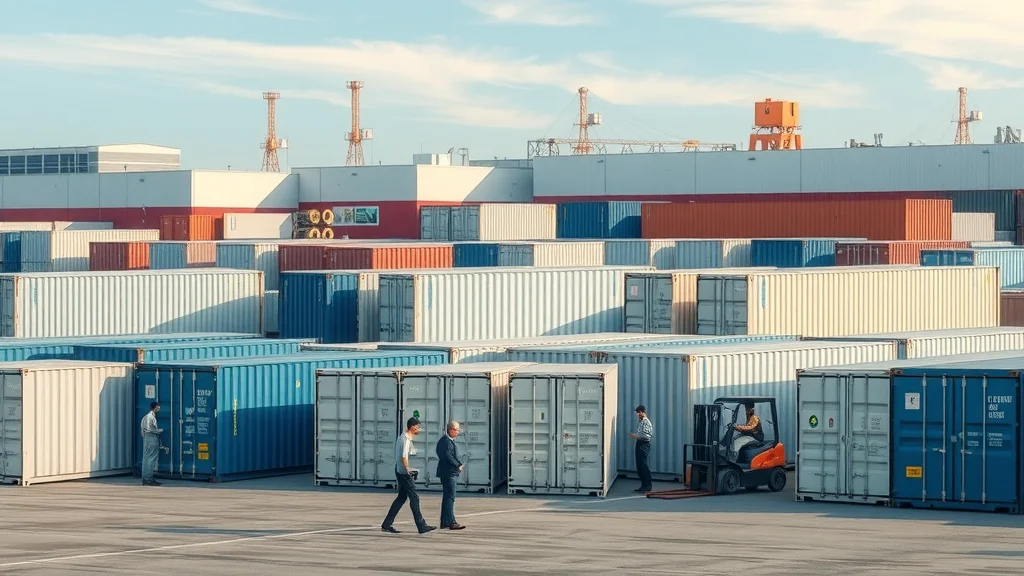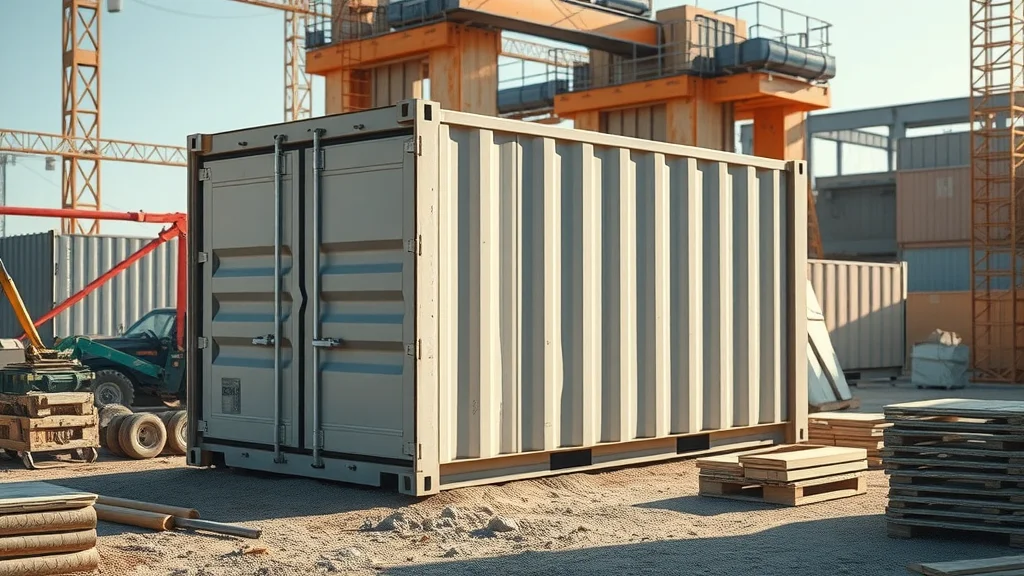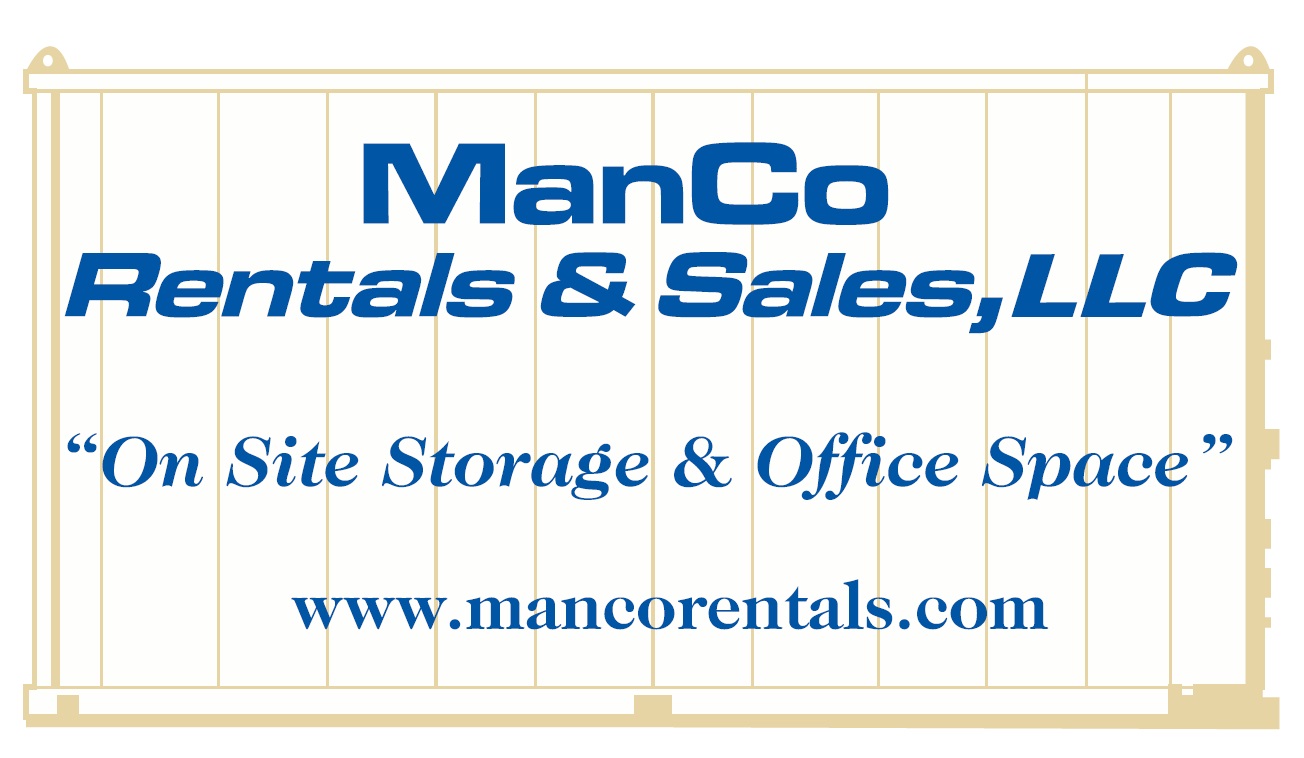Have you ever wondered whether renting vs. buying a shipping container truly makes the most sense for your business’s site storage needs? The answer isn’t as straightforward as you might think—what seems like a cost-saver in the short-term could add unnecessary expense in the long run. Discover the hidden factors and expert insights that will empower you to make a smart, strategic decision for your bottom line.
Unlocking the Best Storage: Why Renting vs. Buying a Shipping Container is a Critical Decision
Whether you’re rapidly scaling a construction project, launching a retail pop-up, or simply need reliable site storage, the debate between container rental and purchase is more important than ever. Businesses often face tight timelines, fluctuating budgets, and growing storage needs, making the choice to rent or buy pivotal. Choosing the wrong option can result in unplanned expenses, limited flexibility, and logistical headaches.
The decision to rent a shipping container offers flexibility with monthly rental fees, easy returns, and minimal maintenance—ideal for short-term projects or when future storage needs are unknown. However, if your business requires long-term, site-specific, or customized storage, buying a shipping container may provide better value over time. We’ll break down costs, review pros and cons, and present real-world scenarios so you can make the best choice for your unique needs. Trust this guide to find your business’s optimal path to efficient and cost-effective storage.

What You’ll Learn About Renting vs. Buying a Shipping Container
-
Key differences between container rental and purchasing a shipping container
-
How shipping container rental affects cost and flexibility
-
Pros and cons of container rent versus buying a shipping container
-
The impact of shipping container size and site storage needs
-
Expert advice on rent or buy choices for business applications
Shipping Container Basics: Understanding the Essentials
What is a Shipping Container and How Are Shipping Containers Used in Business?
A shipping container is a durable, standardized steel box designed for moving large cargo across long distances. Originally developed for the global shipping industry, today’s containers have become essential for businesses in nearly every sector. In business applications, containers serve as secure site storage, offices, workshops, inventory housing, and even retail or event spaces. The sturdy construction of shipping containers protects valuable equipment and inventory from theft, weather, and pests.
Companies often debate renting a shipping container or purchasing one outright based on the anticipated length of use, modification needs, and budget. Containers can be delivered directly to worksites, repositioned as needed, and even modified with doors, windows, shelving, and electrical systems. Whether you need temporary site storage for a construction project or a permanent solution for retail overflow, understanding how shipping containers fit into your business is the first step to making an informed rent or buy decision.

Popular Shipping Container Sizes and Configurations
Choosing the right container size is crucial, whether you’re renting a container or looking to buy a shipping container. Standard containers come in 20 ft and 40 ft lengths, but high cube and specialty configurations are also available. A standard 20 ft container suits most site storage needs, offering approximately 1,100 cubic feet of secure space. The 40 ft container doubles your storage with lower cost per cubic foot, making it ideal for larger businesses or long-term site storage. High cube containers, at 9.5 feet tall, provide extra vertical clearance for oversized equipment or stacked storage.
Businesses must consider site layout, weight restrictions, and delivery logistics when selecting a shipping container. Whether you select a basic cargo container or opt for specialty options (like refrigerated or modified units), understanding container size directly impacts project efficiency and cost-effectiveness—important whether you plan to rent a shipping container for a short rental period or invest in a permanent solution.
|
Container Size/Type |
Dimensions (L×W×H, ft) |
Best Use Cases |
|---|---|---|
|
20 ft Standard |
20 × 8 × 8.5 |
Construction site storage, retail overflow, compact workspace |
|
40 ft Standard |
40 × 8 × 8.5 |
Large equipment storage, business expansion, modular offices |
|
40 ft High Cube |
40 × 8 × 9.5 |
Tall inventory, modified event spaces, industrial equipment |
Renting a Shipping Container: An In-Depth Look at Container Rental Options
How Does Shipping Container Rental Work?
Container rental offers businesses a flexible path to site storage without significant upfront investment. When you opt for a shipping container rental, a rental company delivers the container to your location, and you pay a monthly rental fee for as long as you need it. Most companies offer a choice of container sizes—from compact 10 ft containers for small spaces, up to 40 ft units for heavy-duty storage. Contracts are simple, minimizing administrative hurdles and enabling quick deployment, even for emergency or seasonal site storage needs.
The advantages of renting a container include predictable costs and scalable options. If your needs change, you can swap container sizes or end your container rental altogether with minimal fuss. This is especially valuable for construction, retail, and events—industries with shifting timelines and short-term storage requirements. Renting minimizes maintenance worries, since most rental companies cover repairs, and allows businesses to allocate capital to other priorities rather than a single asset purchase.
Container Rental Agreement Terms and Typical Site Storage Uses
Before entering into a container rental agreement, it’s important to understand the terms. Most agreements specify the rental period—often monthly, but with attractive rates for long-term leases. The agreement covers delivery, pickup, maintenance, and rental fees, with clear terms for damages or modifications. Short-term rentals are ideal for short projects, surplus inventory, or temporary events, while long-term rentals suit seasonal businesses or job sites that relocate frequently.
-
Short-term vs. long-term container rental
-
Popular applications: construction, retail, event site storage, and more
Some businesses use containers as portable storage, pop-up shops, or locker rooms at outdoor events. Others rely on them as mobile offices or inventory warehouses. Whatever the use, a shipping container rental agreement should clearly outline your responsibilities and ensure the unit fits your cargo or site storage requirements.

Buying a Shipping Container: What You Need to Know
Purchasing a Shipping Container: Process and Key Considerations
Buying a shipping container is a smart investment for businesses with long-term or permanent storage needs. The process begins by selecting the container size, type, and condition (new, used, or refurbished). You’ll contact a reputable provider like ManCo Rentals & Sales, obtain a quote, and schedule delivery directly to your site. Consider inspecting the container—especially if it’s used—to confirm it’s weatherproof, structurally sound, and matches your storage requirements.
Buying allows for greater customization than renting. You can modify the container with insulation, shelving, security systems, or custom doors, making it tailored to your business’s evolving needs. While the upfront investment is higher than container rental, the long-term benefits often outweigh initial costs, especially if your storage container doubles as a workspace or is a key element of your site setup. Keep in mind, though, that responsibility for maintenance and repairs shifts to the owner.
Initial and Ongoing Costs When You Buy a Shipping Container
The total cost of buying a shipping container involves more than the sticker price. You’ll pay for the container itself, delivery charges (which can vary by location and container size), any modifications, and site prep. Maintenance and repair expenses—such as rust removal, repainting, or door repairs—are your responsibility as the owner. Unlike a rental, however, you avoid monthly rental fees and your asset retains resale value.
Quote from a ManCo Rentals & Sales expert: “For clients with long-term storage needs, buying a shipping container often pays off within a few years.”
If you plan to use the unit for multiple years, consider the long run benefits: no recurring rental fees, full control over container use, and the ability to recoup some costs through resale if business needs change—making buying a container an excellent option for companies seeking permanent or modified site storage solutions.
Renting vs. Buying a Shipping Container: Detailed Cost Comparison
Renting a Shipping Container: Monthly Costs and Setup Fees
The primary costs for renting a shipping container are the monthly rental fee, an initial delivery fee, and typically a pickup charge at the end of your rental period. Rental rates vary depending on container size, duration, and condition, but most range from $75 to $200 per month for standard containers. Delivery charges often start around $100–$500, depending on the delivery distance and site accessibility.
Renting is advantageous for cost control, especially for short-term projects where buying would lead to unnecessary capital outlay. Maintenance is almost always included—rental companies address any rust, doors, or flooring issues—eliminating surprise repair bills. For businesses with uncertain futures or evolving storage requirements, container rental ensures flexibility and helps preserve cash flow.
Buying a Shipping Container: Upfront Investment and Long-Term Value
Buying a shipping container involves a single upfront payment (typically $2,000–$5,000 for a standard unit, depending on condition and modifications), plus delivery and potential site prep costs. Unlike monthly rental, this investment means you own the storage container and don’t have to budget for ongoing rental fees. Over several years, cost savings can be significant, and the container can be resold if no longer needed.
The long-term value increases further if you use the container for continuous or permanent site storage—essentially reducing your total cost of ownership each year. Businesses that require special modifications or anticipate extended storage needs beyond three years generally benefit financially from buying a container outright, considering the bottom line.
|
Scenario |
Renting Monthly Cost |
Renting Yearly Total |
Renting 5-Year Total |
Buying Upfront Cost |
Ownership 5-Year Total* |
|---|---|---|---|---|---|
|
20 ft Used Container |
$100 |
$1,200 |
$6,000 |
$2,500 |
$2,900 (with basic maintenance) |
|
40 ft New Container |
$180 |
$2,160 |
$10,800 |
$5,000 |
$5,400 (with basic maintenance) |
*Ownership 5-Year Total includes estimated $400 in basic maintenance.
Renting vs. Buying a Shipping Container: Pros and Cons
|
Feature |
Renting a Shipping Container |
Buying a Shipping Container |
|---|---|---|
|
Flexibility |
High—easily returned or swapped for different size |
Limited—fixed asset, less suited for temporary needs |
|
Upfront Cost |
Low—monthly rental payments |
High—one-time purchase and delivery fee |
|
Maintenance |
Handled by rental company |
Owner responsible |
|
Customization |
Not permitted or very limited |
Full customization allowed |
|
Depreciation |
Not an issue for renter |
Owner assumes depreciation risk |
|
Long-Term Cost |
Higher for projects over 2–3 years |
Lower when used 3+ years |

Renting a Shipping Container vs. Buying for Site Storage: Factors to Weigh
-
Frequency and duration of container use
-
Budget constraints for container rent or buy
-
Container size and modification requirements
-
Logistical needs and delivery times
These core factors should guide the rent or buy decision. Short-term, project-based site storage typically aligns with container rental. If you foresee frequent container use or need specialized modifications, buying a container is likely smarter. Always factor in delivery timelines and onsite support when making your final decision.
Evaluating these elements can help you optimize costs, ensure your business’s operations aren’t disrupted, and keep your bottom line healthy, regardless of economic shifts or project expansions.
How to Choose Between Renting or Buying a Shipping Container: A Step-by-Step Guide
Assessing Your Storage Container Needs
The first step in your shipping container rent or buy journey is an honest assessment of your needs. Consider the expected duration—will the container be needed for a few months or several years? Evaluate your storage volume, site access, and whether you require modifications. Businesses with fluctuating needs should prioritize flexibility, while those with long-term planning can benefit from ownership and custom features.
List your goals: are you simply seeking portable storage, or do you want a secure, asset-backed structure with future flexibility? Consult with shipping container rental companies like ManCo Rentals & Sales, who can provide advice tailored to industry-specific requirements and guide you to the ideal unit based on your site and anticipated use case.

Questions to Ask Before You Rent or Buy a Shipping Container
-
How long will you need the storage container?
-
Do you require container modifications?
-
Is site storage space limited or changing?
Answering these questions helps refine your strategy. For example, unpredictable rental periods suggest a container rent solution; fixed, long-term needs with complex requirements make buying a shipping container preferable. Remember, unexpected changes to site storage requirements or business direction can impact your choice—so build in flexibility and seek professional advice.
Shipping Container Rental vs. Purchase: Case Studies from ManCo Rentals & Sales
Real-World Example: When Container Rental Made Sense
A regional event planner frequently needs temporary site storage for outdoor festivals and seasonal pop-up shops. Rather than purchasing, the business opts for flexible shipping container rental: each event receives a container sized for their needs, delivered just in time and picked up afterward. This approach keeps costs aligned with event revenue, eliminates worries about long-term storage or maintenance, and enables the planner to select the perfect container size and features for each unique layout. Container rental has empowered this client to scale operations up or down, eliminating waste and supporting business growth.
Success Story: Buying a Shipping Container for Permanent Site Storage
A construction firm working on multi-year projects chooses to buy a shipping container—a 40 ft high cube—for site storage of tools, machinery, and safety supplies. The one-time upfront cost is offset by the absence of monthly rental fees, leading to a lower total cost in the long run. The company customizes the unit with shelves, additional doors, and power supply, making it perfectly suited for daily use and improved efficiency. After several years, the container remains a valuable business asset, and should they relocate, it can be transported to the new project site or resold for a return on investment.

Visual Guide to Making the Right Choice (embed explainer video)
This short, animated walkthrough explores how renting vs. buying a shipping container plays out for different business needs, breaking down cost comparisons, site storage uses, and the most important factors in the decision-making process. Use this resource to see real examples and pick the strategy that fits your business best.
People Also Ask: Renting vs. Buying a Shipping Container
Is it cheaper to buy or rent a container?
Answer:
Renting a container is generally cheaper for short-term needs (a few months), due to low initial costs and no maintenance responsibilities. However, in the long run—typically after two to three years—purchasing a container almost always costs less. Buying eliminates recurring rental fees and lets you recoup some value if you resell the container later. Consider your project timeline and total cost to determine the best option for your business.
How much would it cost to build a 2000 sq ft container home?
Answer:
The cost to build a 2,000 sq ft container home depends on the number and container size used, modifications, insulation, finishes, utilities, and local labor rates. Typically, building a 2,000 sq ft home may require 8–10 standard 40 ft containers. Budget estimates range from $200,000 to $350,000 or more, including container purchase, prep work, permits, and interior build-out. Always consult local contractors and suppliers for the most accurate pricing.
How much does a 40 feet container cost?
Answer:
The cost of a 40 feet shipping container varies by condition (new or used), location, and delivery. On average, a used 40 ft standard container costs between $3,500 and $4,500, while a new or one-trip container might cost $5,000 or more. Customizations, specialty features, or rush delivery can raise the price, so work with a trusted provider to get an exact quote for your project.
Why do people rent shipping containers?
Answer:
Businesses and individuals rent shipping containers for site storage, short-term projects, or temporary space needs. Container rental offers flexibility, low upfront costs, and hassle-free maintenance—ideal for construction, events, retail, or disaster recovery. Renting is also popular when future storage needs may change, as containers can be easily swapped, returned, or relocated by rental companies.
Frequently Asked Questions: Renting vs. Buying a Shipping Container
-
Can I customize a rented shipping container? Most rental agreements do not allow permanent modifications. Some minor, temporary interior changes may be permitted, but always confirm with your container rental provider.
-
Do shipping containers require maintenance? Yes. Rental companies maintain their own fleets; if you buy a container, you’ll be responsible for routine upkeep such as rust prevention and door lubrication.
-
Are there long-term lease options for shipping container rental? Yes, many providers offer discounted long-term rental agreements, ideal for businesses with multi-year storage needs but without the desire to own.
-
How fast can I get a shipping container delivered for my site storage project? Delivery typically happens within a few days of agreement for most locations. Customized containers or remote areas may require additional lead time.
Key Takeaways: Making the Smart Choice for Your Business
-
Match your storage container option to your timeline and budget
-
Factor in all costs—upfront and ongoing—before you rent or buy
-
Consult with a reputable provider such as ManCo Rentals & Sales for tailored advice
Ready to Find Your Perfect Shipping Container Solution?
CallManCo Rentals & Salesat 877-915-7368 or Emailbrett@mancorentals.com
Take charge of your business’s storage future—whether you need the versatility of container rental or the value of permanent ownership, ManCo Rentals & Sales is ready to guide you every step of the way.
